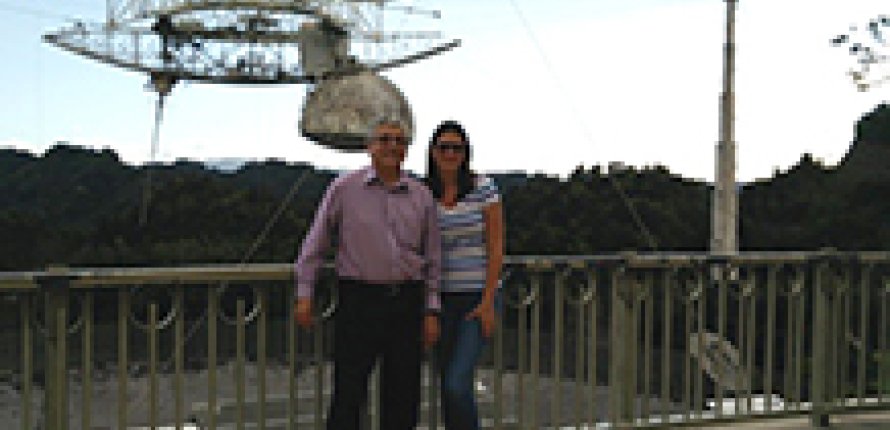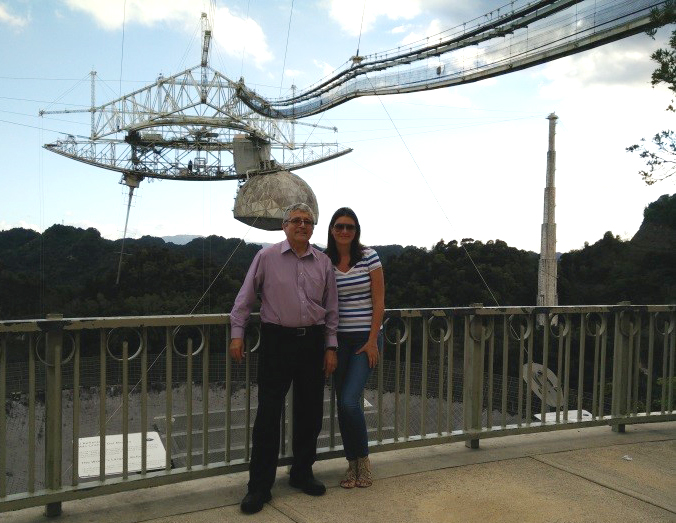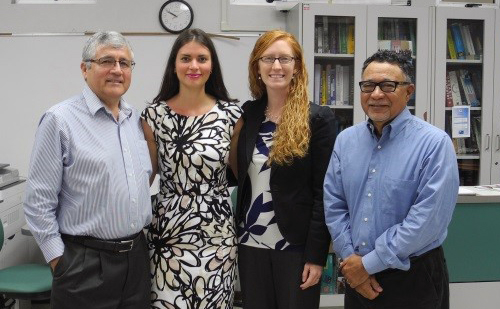Building Networks in Puerto Rico Through OLF

Iva Bojic, Postdoctoral Research Associate, University of Zagreb, Croatia
2014-2015 Fulbright Visiting Scholar at the Massachusetts Institute of Technology
Coming from snowy Boston, it was a real pleasure to visit tropical Puerto Rico for a few days and give three lectures at different Universities: Universidad Del Turabo in Gurabo, Universidad Del Este in Carolina, and Universidad Metropolitana in San Juan. As a Fulbright Visiting Scholar to MIT, I was invited to speak at several universities in Puerto Rico as part of the Fulbright Outreach Lecturing Fund (OLF). My contact, Dr. Arraita, was the perfect host who was kind enough to invite me to Puerto Rico and organize the whole trip. But, let’s start from the beginning.
After four hours spent in an airplane, I landed to the beautiful island of Puerto Rico. Dr. Arratia picked me from the airport and took me to a typical Puerto Rican restaurant called Raíces. Raíces offers a memorable dining experience steeped in local culture, history, and traditions. Meanwhile, the décor simulates a typical Puerto Rican country home circa 1940, with wooden ceilings, open window views to murals of the Puerto Rican countryside, and traditional masks of ‘Vegigantes’. Raíces’s staff also don the traditional ‘jíbaro’ attire. At Raíces I tried the traditional Puerto Rican dish Mofongo, an interesting experience where bananas replace potatoes. Since they cannot grow potatoes at these latitudes, they are mostly using bananas to replace them.

After learning that “Contact” with Jody Foster is one of my favorite movies, Dr. Arratia took me to visit the Arecibo Observatory, located in in the municipality of Arecibo, where the movie was originally filmed. Dr. Arratia explained the way they are using the observatory’s system for exploring the atmosphere and also showed me the cottage where Jody Foster was living while filming the movie. For me, it was a once-in-a-lifetime experience because this movie inspired me to become a scientist and finally after so many years I was standing right there.
On the day of the lectures, Dr. Arratia took me first to Universidad Del Este (UNE) in Carolina. UNE is a private, non-profit institution of higher education and a component of the Ana G. Méndez University System of Puerto Rico that was founded in 1949 as Puerto Rico Junior College and finally evolved into a university in 2001. There I delivered a lecture in front of more than 30 students who were mostly interested in chemistry. Although the focus of my lecture was on bio-inspired algorithms applicable in computer science, which was not strictly aligned with their field of study, we found a common ground discussing other interesting applications of chemistry-inspired phenomena in computer science. I am positive that after hearing my lecture they became more aware of the importance of multidisciplinary scholarship, not only during their studies, but also later in their lives.

Our second stop was Universidad Del Turabo in Gurabo. Since the majority of students attending my lecture had their majors in electrical engineering, during the presentation I focused on the implementation part of my research, i.e. how I implemented the developed algorithm on a real hardware. I was able to engage them into discussion of the future of the internet of things and about the challenges that both they and I will face in the future.
Our last stop was at Universidad Metropolitana (UMET) in San Juan. My lecture at UMET was in a library with a more intimate group of just six students. I enjoyed it very much because I had the privilege to meet students who were a part of Student Research Development Center whose the main focus is the development of its students. The center has developed a successful K-12 Research Program funded by the National Science Foundation and the Puerto Rico Space Grant Consortium. This program shows that an early research experience is an effective tool to motivate students to open the gate for discovery and innovation, which will serve as the basis for future scientific careers. This development is made possible thanks to summer research experiences through its internships; participation in annual Research Symposiums and the Pre-College Symposiums; and a diversity of conferences presented by Fulbright Visiting Scholars. These young students already participated in a few summer internships and have a lot of research experience behind them. It was such a pleasure to hear them talking about their research interests and experience. I felt truly connected to the students I met at UMET, and I look forward to staying in touch.
Dr. Arraita is doing an incredible job involving young scientists in research while they are still in high schools. At my home institution, I serve as an Education chair and recently won annual national award for my outreach activities, and we connected very quickly on that level as well. Currently we are planning further collaboration within several projects.
I would like to thank Dr. Arratia and his associates for making my visit possible and for his hospitality during my stay. I would also like to thank Laurie for inviting me to spend a day at the beach. It was really nice to have some relaxing time as well. To everybody who is a part of the Fulbright Program, I have only one thing to say: Network, network, and network. There are many opportunities to experience new places and new things, if you will look.
